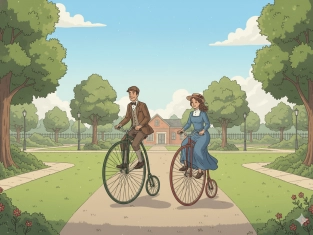First Conditional and Second Conditional
Table of Contents
Exercises
Explanation
Conditional sentences allow us to discuss situations that depend on a particular condition and to predict or imagine what might happen as a result. These sentences are built around two essential parts:
-
the if-clause → the condition
-
the main clause → the result or consequence
General pattern: If + condition, result
1. First Conditional
The First Conditional is used for realistic, possible future situations. It describes a condition that could actually happen and a result that is likely or logical if that condition is met. It is especially common when we make predictions, offer warnings, or talk about plans.
Structure: If + Present Simple, will / can / may / might + infinitive
Examples
-
If the traffic is heavy later, we will take a different route.
-
If you drink some tea, you will feel warmer.
-
If the team wins today, they might move to the final round.
We can also use an imperative in the result clause when we want to give a direct instruction:
-
If you hear the alarm, leave the building immediately.
The First Conditional is useful when we want to show a clear connection between a possible future event and its expected outcome.
2. Second Conditional
The Second Conditional is used to talk about imagined, unlikely, or unreal situations in the present or future. It often helps us express wishes, hopes, regrets, or ideas that are different from reality.
Structure: If + Past Simple, would / could / might + infinitive
Examples
-
If I lived near the coast, I would go swimming every morning.
-
If he saved more money, he could travel abroad next year.
-
If they organised their time better, they might finish their work earlier.
We also use the Second Conditional for polite or hypothetical advice, especially with the phrase If I were you…
-
If I were you, I would ask for more information before deciding.
The Second Conditional helps speakers imagine alternative situations and consider how things could change under different circumstances.

